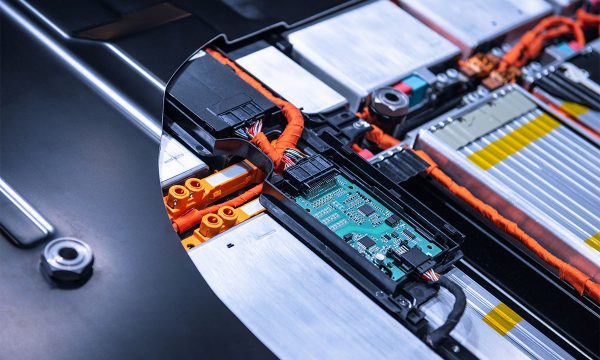Government policies and economic twists and turns are disrupting our industry.
If you are a dealer and are looking at the title of my column for this month you might be thinking that I have got the wrong end of the stick.
For the last two years or so, even if you haven’t had all the cars that you wanted to sell to your customers that definitely wanted to buy a car, chances are these last couple of years have been pretty good for you with respect to your profitability.
Even this year, if I were to hazard a guess, I think most of you are probably doing pretty well half way through the year.
Some of you, though, may have that little nagging thought in the back of your mind or in your gut, wondering how long this run is going to last. Now it is not my job to burst anyone’s bubble, or to be a harbinger of doom for the industry, but here are a few reasons why I believe the industry is currently under siege and why things are probably going to get worse before they get better.
Market dynamics:
Dealers will be in much better position to assess this than I am but from what I understand based on data from J.D. Power through April of this year (things may have changed), the following things are true:
- Dealer gross has gone down a bit on average, incentive spend has gone up dramatically, and average days to turn vehicles has more than doubled.
I do a lot of driving and I’ve noticed that inventory levels on many, if not most dealers’ lots seem to be “better” than they were a few months ago. I put better in quotation marks because as you well know, lots of inventory on the ground is not necessarily a good thing.
It needs to be floor-planned and financed and could also speak to the consumer feeling a bit squeezed based on interest rates that seem to be going nowhere but up, and consistently persistent inflation holding on around 4 per cent.
Affordability
Related to the last point, consider that the average price of a vehicle to the consumer at the beginning of 2020 was around $36,000. Three years later the average price of a vehicle at the beginning of this year was just shy of $50,000.
It doesn’t seem to me to be that long ago that Nissan was advertising the Micra for $9,999. We haven’t seen that, or even $19,999 or $29,999 for that matter, for a while. The average new car payment these days is about $800/month, and the cost of borrowing has almost tripled!
How will your customers continue to afford new vehicles?
Consider that the average price of a vehicle to the consumer at the beginning of 2020 was around $36,000. Three years later the average price of a vehicle at the beginning of this year was just shy of $50,000.
What about EVs?
Environmental groups and some within government have been purveyors of the fallacy that ZEV mandates will bring the prices of EVs down by forcing economies of scale. Yes. Perhaps. Someday, but not any time soon.
Again, according to J.D. Power the price of EVs has actually gone up! EVs are currently about $14,000 more expensive than their ICE counterparts.
Federal, and in some cases provincial incentives, will reduce this gap but not eliminate it. I don’t need to tell dealers that there is a global supply and demand imbalance with respect to EVs, so you are stuck in a situation where you probably can’t tell your customers a definitive date when they will receive their vehicle because, the manufacturer likely can’t tell you when you will be getting your vehicles.
So far we haven’t really delved into the many pieces of public policy that are, or will soon be, making our collective auto sector a whole lot more challenging, leading to my original assertion that we are under siege.
ZEV mandates:
If you live in Quebec or B.C. you are familiar with the concept of ZEV mandate. Quebec has had their mandate since 2018 and B.C. since 2020.
If you are a dealer you have been advised by your government in either province not to worry about the ZEV mandates because it is only the manufacturer that is going to be regulated and it will have nothing to do with you.
Dealers in both provinces are awakening to the stark reality that the ZEV mandate may very much impact their businesses, especially as governments in both provinces will be making their ZEV regulations more stringent before the end of the year.
B.C. will be setting a 2030 target of 90 per cent ZEV sales, while Quebec’s 2030 target will be adjusted upward for 2030 to “only” 85 per cent. While B.C. and Quebec are leaders in EV sales penetration — 18.1 per cent of sales and 13.2 per cent of sales in 2022 respectively — getting to 90 per cent and 85 per cent in less than 7 years seems like a bit of a bridge too far.
The way this will impact dealers is if manufacturers cannot make their ZEV target and they want to avoid paying a $20,000 penalty, then they could choose to limit the denominator of the ratio — or the number of ICE vehicles they make available to their dealer bodies. Not an ideal situation for anyone.
Not to be outdone by Qubec and B.C., if the federal government gets its way, prior to the end of this year we will also have a federal ZEV mandate in place that will mandate that manufacturers meet 20 per cent ZEV sales by 2026, at least 60 per cent by 2030 and a full 100 per cent by 2035 — or 12 years or 2-3 product cycles from now.
For an experiment, ask your customers how many of them know that the federal government plans on banning gasoline engine cars in 2035.
Three different ZEV laws — all different — is a whole lot of regulatory compliance and potentially money spent to purchase credits from competitors (think Tesla) to be compliant. All of this will at some point roll down to the consumer, who as we noted earlier, is already constrained from an affordability perspective.
Canada unique regulations
The automotive industry in Canada has always benefitted from both economies of scale and common safety and emissions regulations with the United States. This has allowed Canadians to enjoy amongst the widest variety of vehicles with the latest technology at the lowest possible cost.
Our political leaders are moving to disharmonize on both the emissions and the safety front. We are going to get a federal ZEV mandate as well as following the American’s new EPA regulation that will deliver greater levels of ZEV penetration to Canada than Minister Guilbeault’s ZEV mandate. Why do we need both? Belt and suspenders.
Three different ZEV laws — all different — is a whole lot of regulatory compliance and potentially money spent to purchase credits from competitors (think Tesla) to be compliant.
There really is no rationale, other than the Minister and the Liberal government has expended so much political capital on introducing a ZEV mandate, that it’s not prepared to walk back from the cliff.
On the safety side too, after being embarrassed by the auditor general after a series of high profile recall investigations over the last half dozen years, Transport Canada is now proposing to implement a significantly more aggressive and invasive reporting system for manufacturers in Canada than what is in place in the United States.
Should this proposal go through, it will require a significant investment on behalf of the automakers in Canada to be able to log early warning data (i.e. prior to a recall being issued) that is far more extensive than what is required in the U.S.
Logic dictates that in a market at least 10 times our size, any issues and concerns with vehicles are bound to manifest themselves there as opposed to a market that is a fraction of the size. Canadians may say that Canada should be doing this and, fine, but it all comes at a cost and these costs too will eventually flow down to the consumer.
Canada is a world leader with its Chemicals Management Plan. This is something we should all be proud of but what being a world leader means is that it often puts us out of sync with other markets, like the United States or Europe. If we were a bigger economy with broader influence, like the United States, this might make some sense, but as it stands right now Canada is looking to ban flame retardant chemicals used to prevent fires in vehicles and required under the Canadian Motor Vehicle Safety Act, with no viable alternative.
As you probably are aware, Canada is looking to ban plastics use too. Do you know how many types of plastic and plastic parts are in a typical vehicle? Neither do I, but what if one of the provisions was that all of these plastics needed to be identified and labeled?
Trust me, I could go on, but I am only allocated a certain amount of real estate for my column. Perhaps the next column will be a second installment, if that wasn’t enough to convince you that our industry is under siege.











